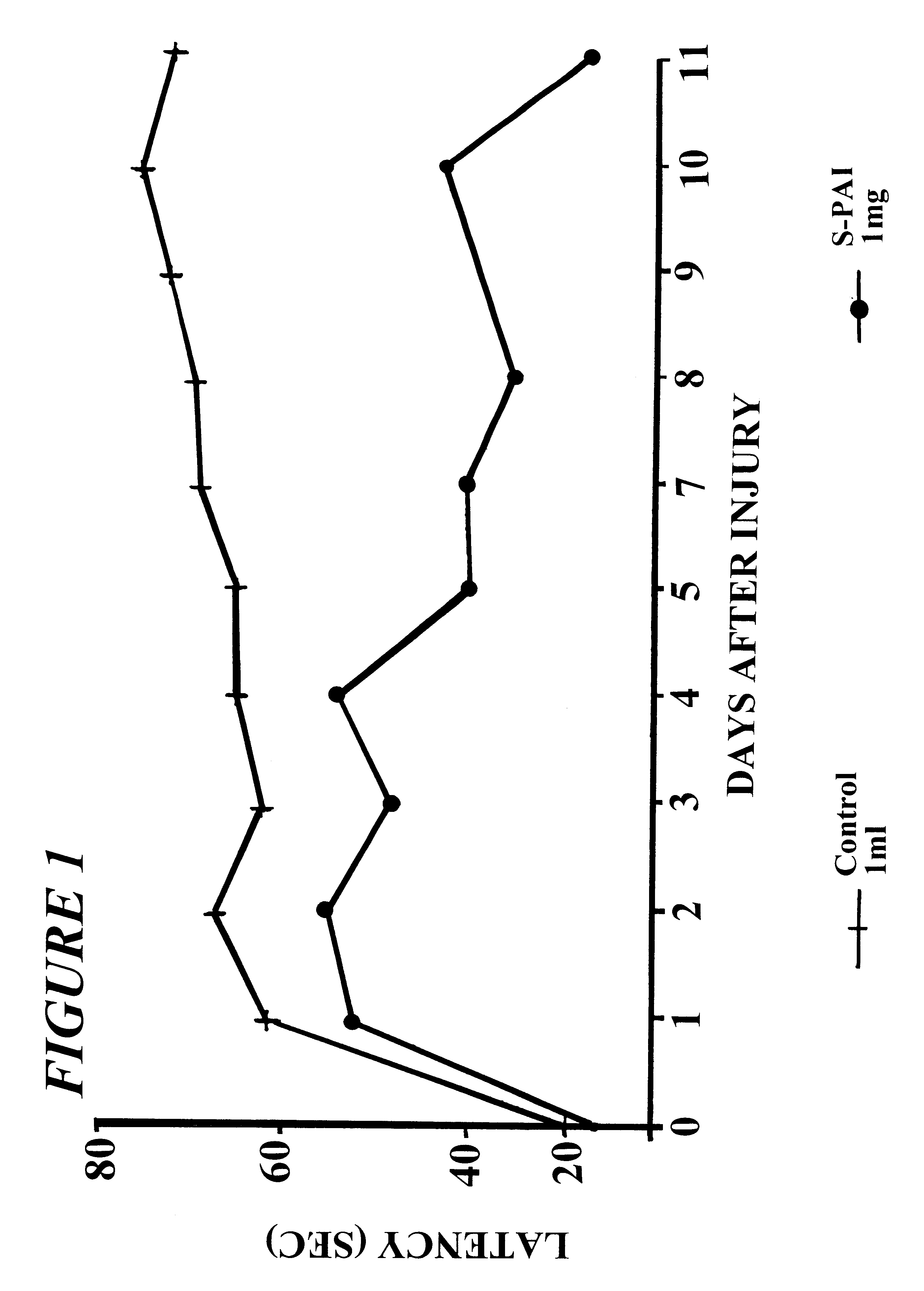Pharmaceutical compositions comprising S-(-)-N-propargyl-1-aminoindan
- Summary
- Abstract
- Description
- Claims
- Application Information
AI Technical Summary
Benefits of technology
Problems solved by technology
Method used
Image
Examples
example 1
Lack of inhibition of MAO activity in vivo by S(-) PAI mesylate
Rats (male Sprague-Dawley-derived) weighing 250.+-.20 g were treated with one of the enantionmers or the racemic form of PAI by intraperitoneal injection (ip) or oral gavage (po), and decapitated 1h or 2h later respectively. Groups of three rates were used for each dose level of substance, and MAO activity determined in brain and liver using the general technique described in Example 19 of U.S. Pat. No. 5,387,612. The amount of protein in each incubation was determined using the Follin-Lowry method, and enzyme activity calculated as nmol of substrate metabolized per hour of incubation for each mg of protein. Activity of MAO in tissues from animals treated with the enantiomers or the racemic form of PAI was expressed as a percentage of the enzyme activity in a group of control animals administered vehicle (water for oral administration, 0.9% saline for ip injection).
Results
None of the dose levels used produced any obvious...
example 2
Neuroprotective effect of S(-)PAI in the hypobaric hypoxia model
The model used is analogous to the one described by M. Nakanishi et al., Life Sci. 13: 467-476 (1973); and by Y'Oshiro et al., J. Med. Chem. 34: 2014-2023 (1991). A group of 4 ICR male mice each weighing 20-25 g were placed in a 2.5 L glass chamber (A) at atmospheric pressure. Chamber A is connected to a 12 L chamber (B) through a valve which is initially pressure. Chamber A is connected to a 12 L chamber (B) through a valve which is initially closed. The air in chamber B was evacuated to a pressure of 100 mmHg. The valve between the two chambers was opened rapidly, whereupon the pressure in chamber A fell within 14 seconds to 200 mmHg. The survival time of the mice in chamber A was determined to a maximum hypobaric exposure of 15 minutes. Effect of drug pretreatment on survival is calculated as the percent of the survivai time of the drug-treated group as compared to saline-injected or vehicle-injected group. Control g...
example 3
Locomotor activity and brain infarct size in male Wistar rats after middle cerebral artery occlusion (MCA-O) in the absence and presence of PAI enantiomers
A modification of the procedure described by Tamura et. al., was used (Tamura A, Graham D, McCullch J, Teasdale G. H. (1981) J. Cereb. Blood Flow and Metab. 1;53-60). Male Wistar rats (Olac England-Jerusalem) weighing 300-400 g each, were anesthetized with a solution of Equitesine administered i.p. at a dose of 3 ml / kg. Equitesine consists of 13.5 ml sodium pentothal solution (60 mg / ml), 3.5 g chloral hydrate, 1.75 g MgSO.sub.4, 33 ml propylene glycol, 8.3 ml absolute alcohol, made up to 83 ml with distilled water.
Surgery was performed with the use of high magnification operating microscope, model SMZ-2B, type 102 (Nikon, Japan). In order to expose the left middle cerebral artery, a cut was made in the temporal muscle. The tip of the coronoid process of mandible was excised as well and removed with a fine rongeur. Craniectomy was ...
PUM
| Property | Measurement | Unit |
|---|---|---|
| Mass | aaaaa | aaaaa |
| Mass | aaaaa | aaaaa |
| Mass | aaaaa | aaaaa |
Abstract
Description
Claims
Application Information
 Login to View More
Login to View More - R&D
- Intellectual Property
- Life Sciences
- Materials
- Tech Scout
- Unparalleled Data Quality
- Higher Quality Content
- 60% Fewer Hallucinations
Browse by: Latest US Patents, China's latest patents, Technical Efficacy Thesaurus, Application Domain, Technology Topic, Popular Technical Reports.
© 2025 PatSnap. All rights reserved.Legal|Privacy policy|Modern Slavery Act Transparency Statement|Sitemap|About US| Contact US: help@patsnap.com

